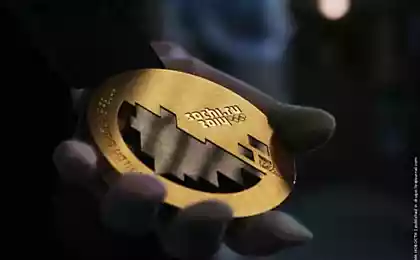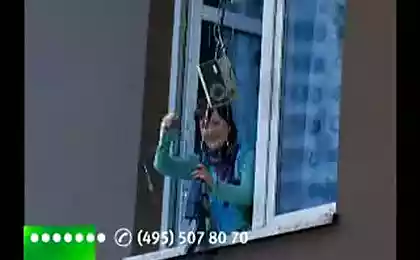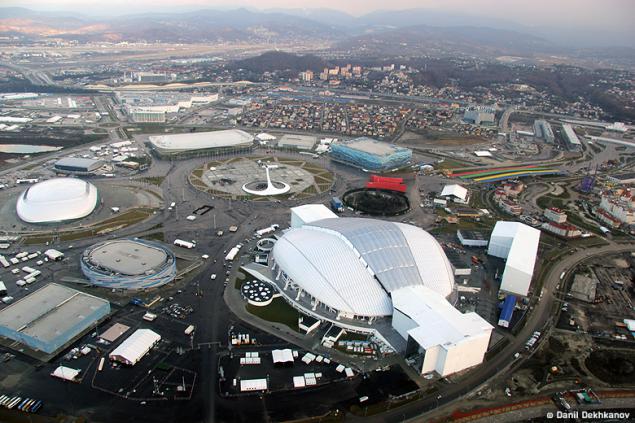
From 20 to 22 December Megaphone brought journalists and bloggers in Sochi to tell and show the readiness of mobile communications for the Olympics, starting in early next year. Left out of the post policy issues and the need for the Olympic Games (the more so because I do not see in these discussions practical sense - the train has long gone), and tell what is more interesting to us, habrazhitelyam: how good is the mobile communications and mobile Internet. After 17 days (from 7 to 23 February), which will be held during the 22th Olympic Winter Games, is expected to nearly half a million visitors from 85 countries. Perhaps this will be the most ambitious "stress test" for the mobile infrastructure in the history of mobile communications, so let's see whether this ready mobile partner Olympics.
Under the cut a lot of pictures!
Before you take us to the test, Tigran Poghosyan, Deputy General Director for Strategic Projects Megafon spoke about what work has been done over the years of preparation for the Olympics. It is understandable - after all if the ice rink or the Olympic Village can be seen even from a helicopter (that is the result of good and visible from afar), the communication infrastructure facilities for the most part placed imperceptibly. And you can, for example, to pass the palm (of which below) and note that this mobile station.
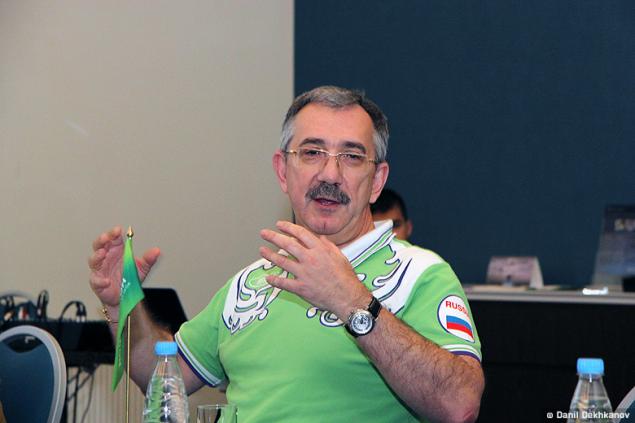
Areas of responsibility Megafon Sochi are services send text and multimedia messaging, voice communications services, Internet access services and data services. "Ground" infrastructure - WiFi access point and leased line access to the Internet (or lines for voice communication) - this is the responsibility of Rostelecom.
As I wrote above, the features of the project is the high density of traffic - coastal cluster - 82000 spectators at 2 square kilometers, the mountain cluster - 112,000 spectators at the 61 square kilometer.
At the moment, network readiness of the coastal and mountain clusters - 100%.
It was built 685 stations 2G / 3G and 4G more than 270 stations. Sochi 2014 will be the first Olympics with 4G.
In order to provide high-bandwidth, fiber-optic lines was deployed (mountain cluster - 92 km coastal cluster - 40 km, intercluster site - 71 km, and the route Sochi - Adler - 23 km.
At sites with high density (for example, at the ice arena) used vertical sectorization in which each station is aimed at specific sectors with the audience:

In addition sectorization was taken into account the experience of the games in Vancouver (and the latest trends in custom scripts), and increased bandwidth to "return" traffic. Mobile users are increasingly recent years to share their content through social networks, MMS, e-mail, and it is obvious that being in the center of the Olympic events will want to share this "wealth" with all your friends. Therefore, the transmission rate is at 20% of the speed of reception, and 40%, and in some cases all 50%.
Another feature is the installation of the switch MSS (Mobile Switching Center), allowing in case of any malfunction or congestion (due to external "big world") to maintain basic voice services for those who are in Sochi. Ie call Moscow parents may not succeed, but to call a friend, who had gone half an hour ago for a beer and chips - easily.
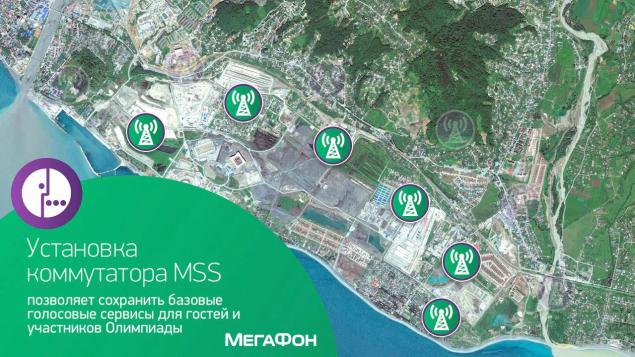
Testing h4>
The first item on the test was a helicopter flyover, infrastructure inspection and measurement of speed "in the sky»:
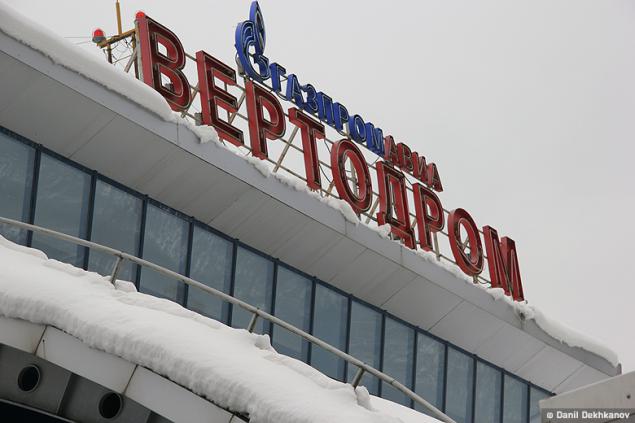
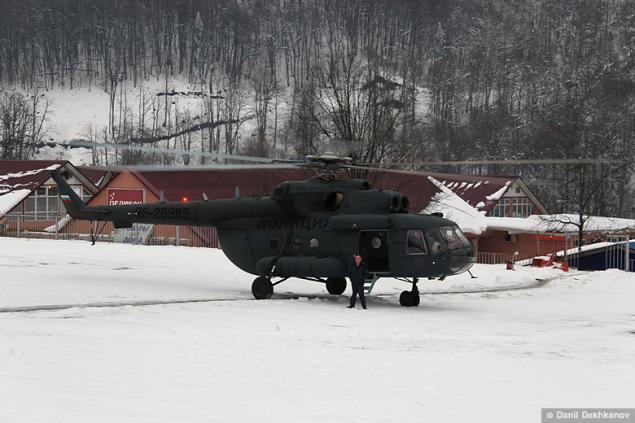
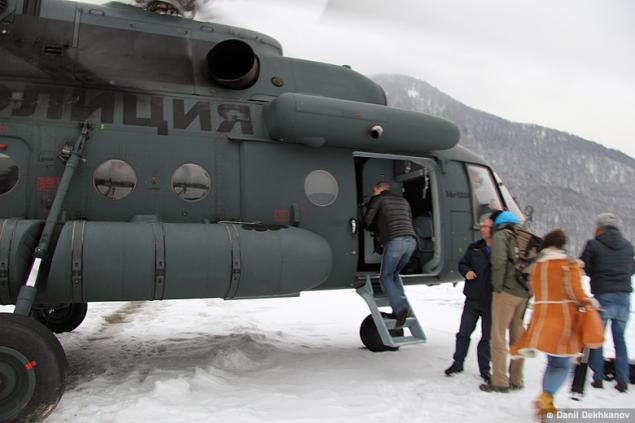
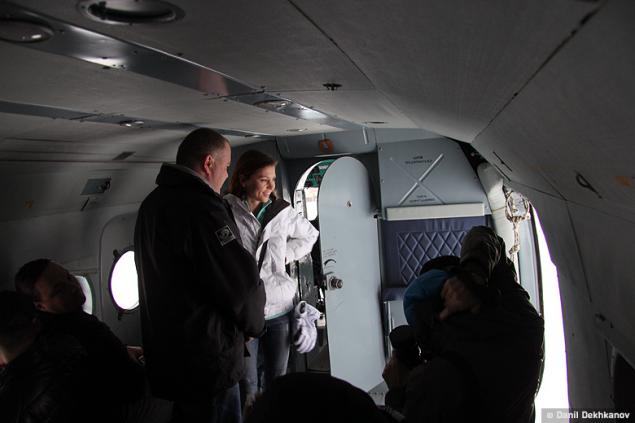
Cell tower:

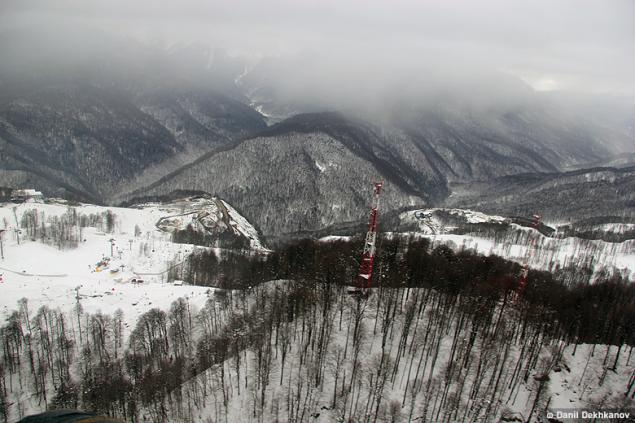
The terrain is very difficult for the construction of infrastructure facilities, in some cases it was necessary to build additional suspension bridges:
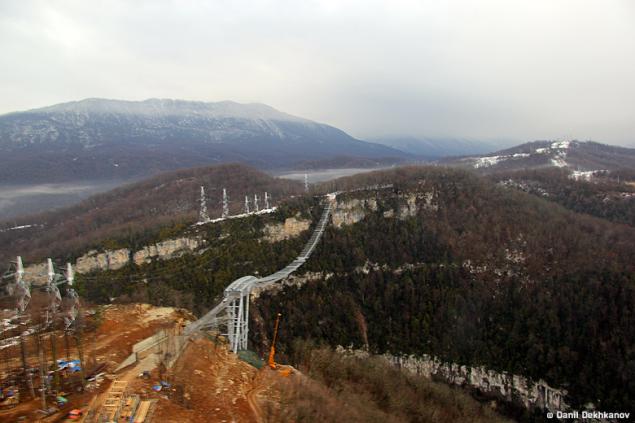
Trout Farm:

Building housing. Perhaps in the future there will also hotel as in China ?
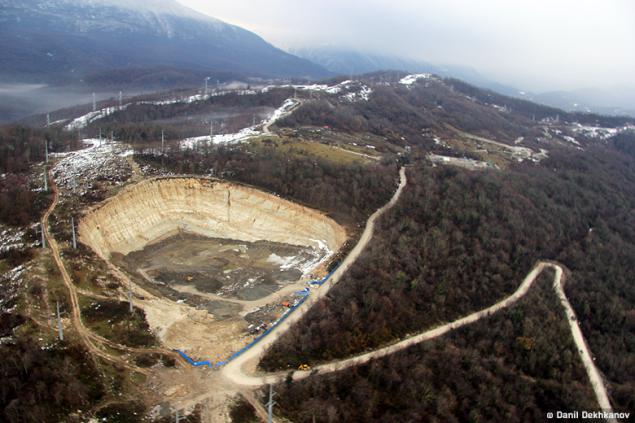
Airport (airport terminal) was completely rebuilt, its capacity now stands at 3,800 bits passengers per hour:
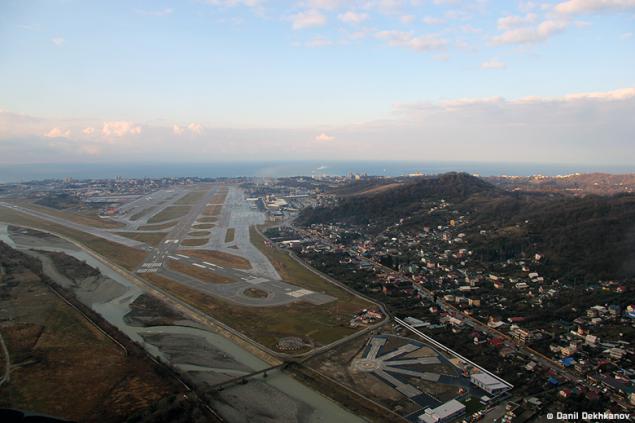
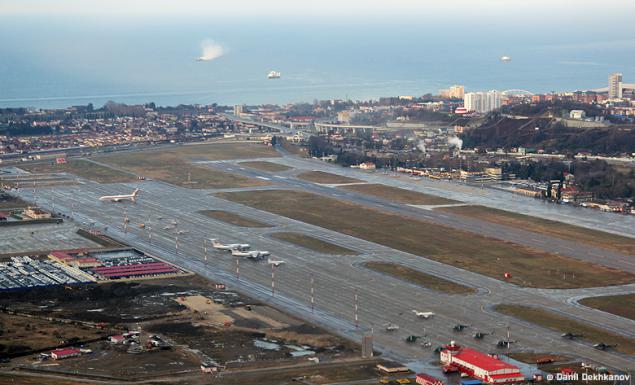
And here is the coastal cluster of Olympic venues:
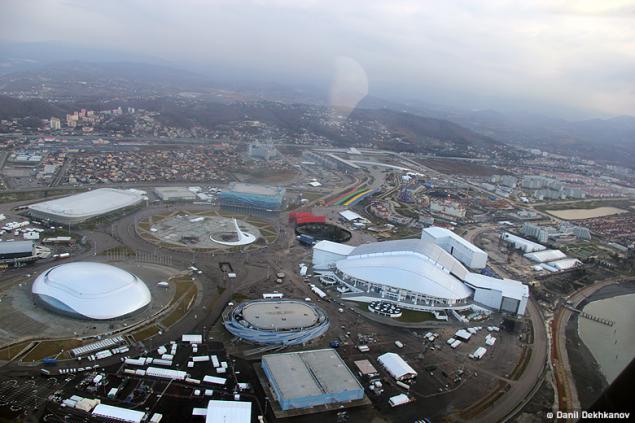
The complex is on the left, which resembles a mouse Apple - it's ice palace "Big" (later we will visit the Channel One Cup, which took place in it, more on that below). The largest object -stadion "Fischt", named in honor of one of the peaks of the Main Caucasian ridge height of about 3000 m. By the way, in the framework of this stadium laid the capsule with a message to future generations: "Believe in your strength, and together we will win."

Amusement park does not apply to the Olympic venues, but will brighten up leisure athletes and guests of the Olympiad:
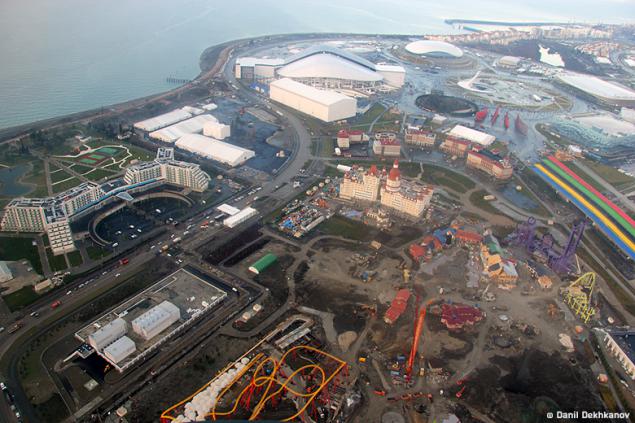
Judging by the number of construction machinery, will have time to finish:
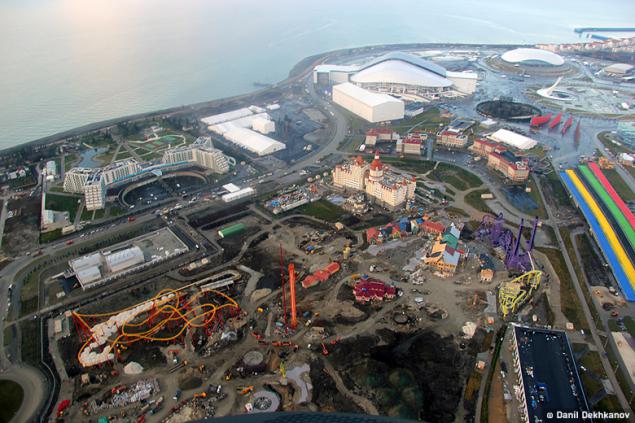
The central square, where the opening ceremony of the Olympic Games:
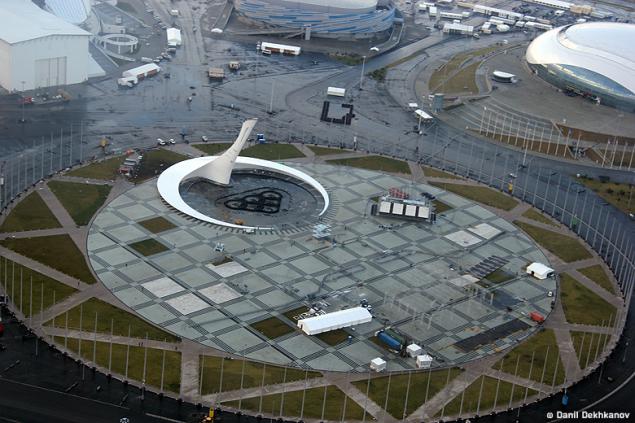
Around the coastal cluster has a ring road:
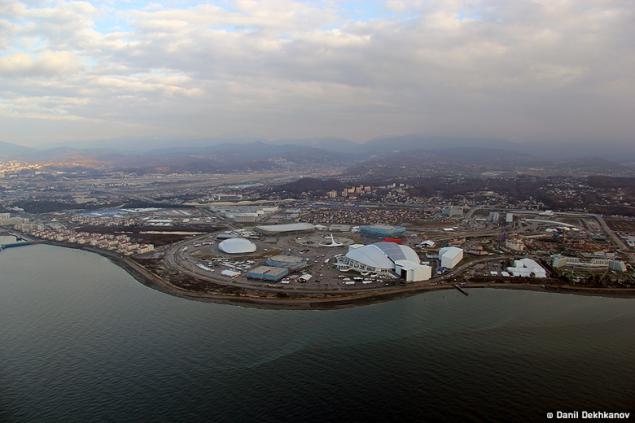
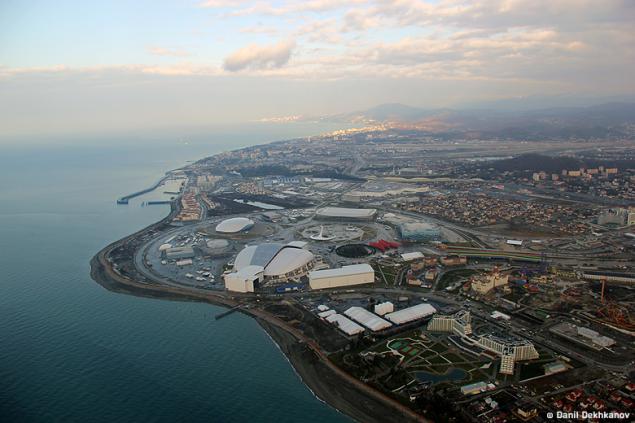
All in preparation for the Games in Sochi and the surrounding area has been constructed and upgraded 47 transport infrastructure. More than 367 km of roads and bridges, more than 201 km of the railway. Fully built 17, 5 km of tunnels (10, 7 km of railway tunnels and 6, 8 km of road tunnels), 12 bridges.
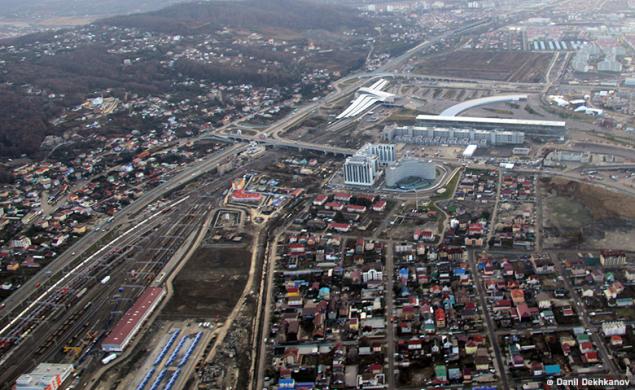
The building is the main media center surprised the complex structure of the roof:

Media Center is planning to more than 8,000 media representatives from 70 countries. It Broadcasters and media ATMs, post office, laundry, dry cleaning, shops, fitness centers, spas, etc.
Photos of this "difficult" roof that could become a haven thousands Carlson, closer:

Go back to the mountains. While the others clung to the window, slipped into the cockpit to the pilots:

These photos can hang as a motivator in driving schools. Putao buttons and levers of the car?
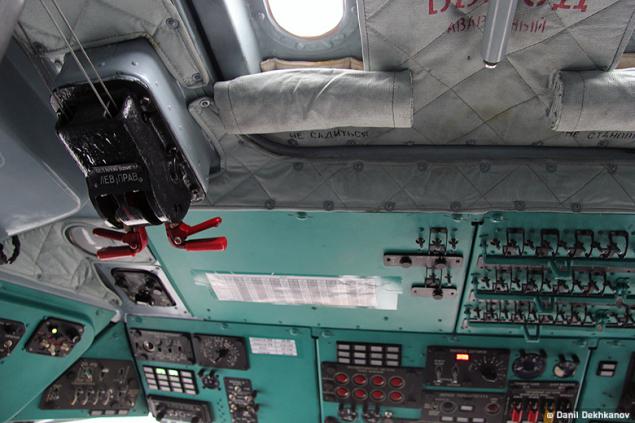
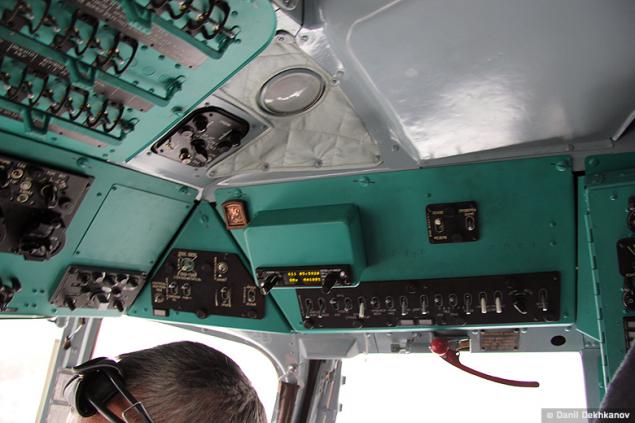
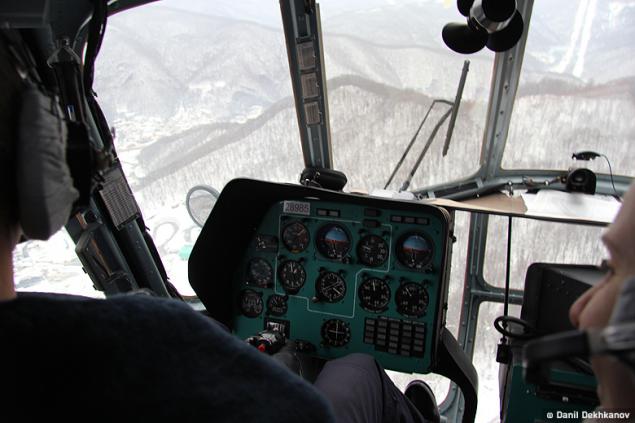
Flight plan PO.KRUGU
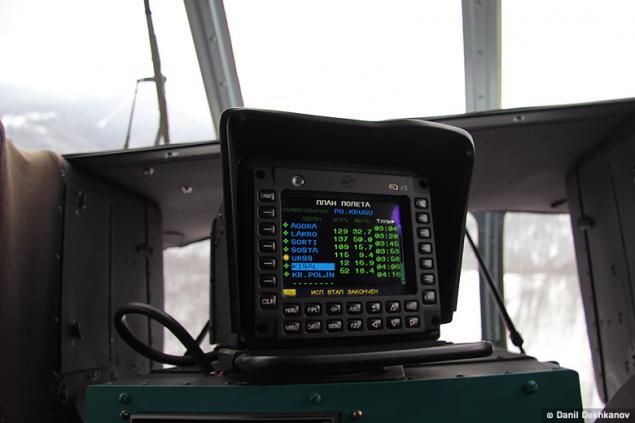
In addition to the digital navigator lie and "analog" card:
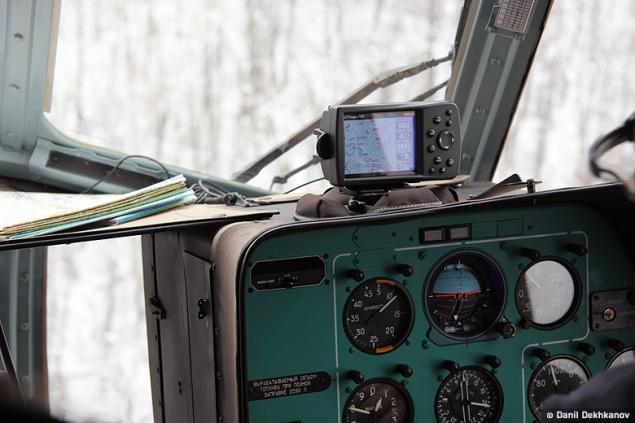
Bobsled track (center Luge "Sledge") for allegedly crumbling roof. Everything is in place, do not believe it "stuffing." The length of the route - 1814 m (the longest in the world), of which 314 m - the zone of inhibition. The calculated maximum speed - 135 km / h:
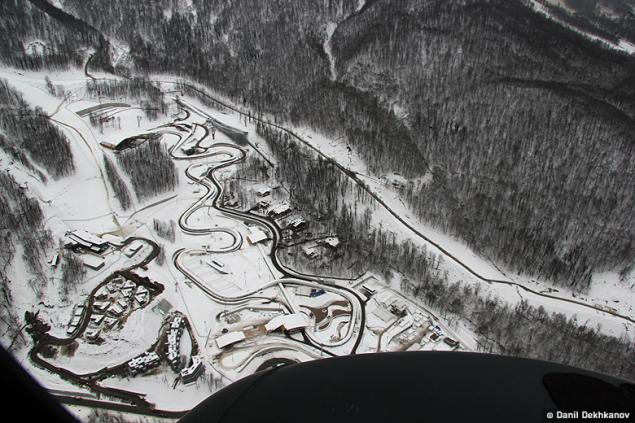
This artificial lakes for harvesting snow. If the weather suddenly "let you down" and the snow melts, the artificial. The technology of how it will do shows in this wonderful comic .
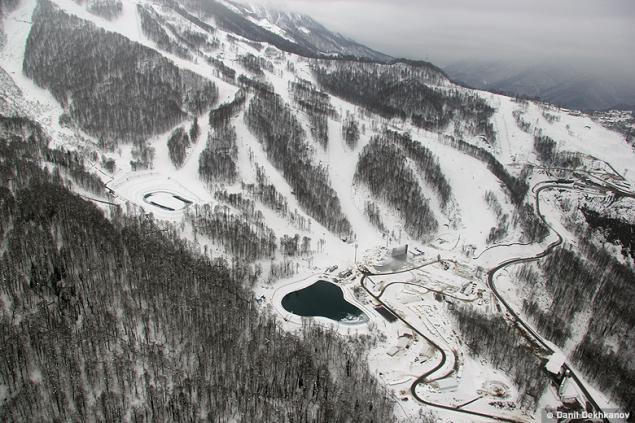
Testing on-board communications:

Indicators: on average - 2 Mb / s for download and 1 Mb / s to return. Of course the connection often disappear, but it is understandable - all stations are directed to the ground and is quite surprising that something worked.
Lands, and we reach the first item on our "ground" of the program - Media Center:
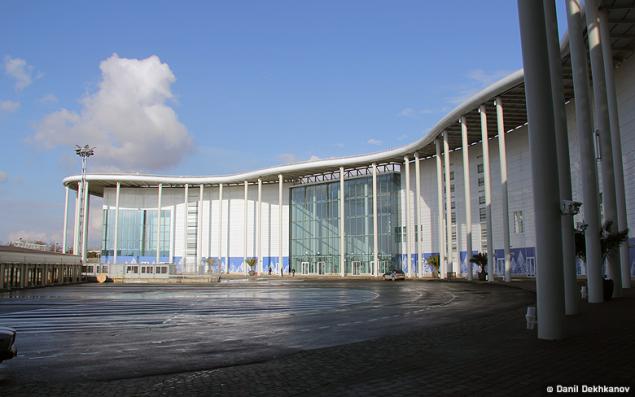
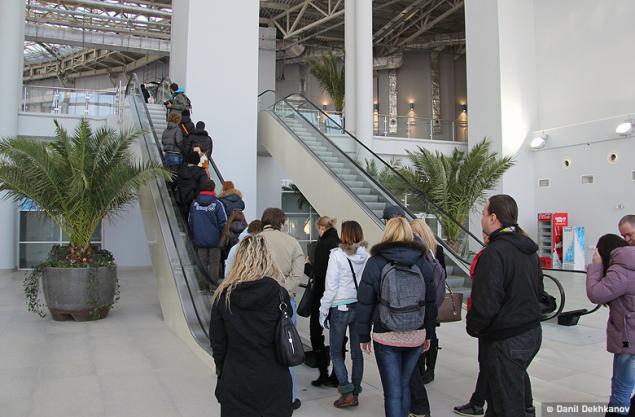
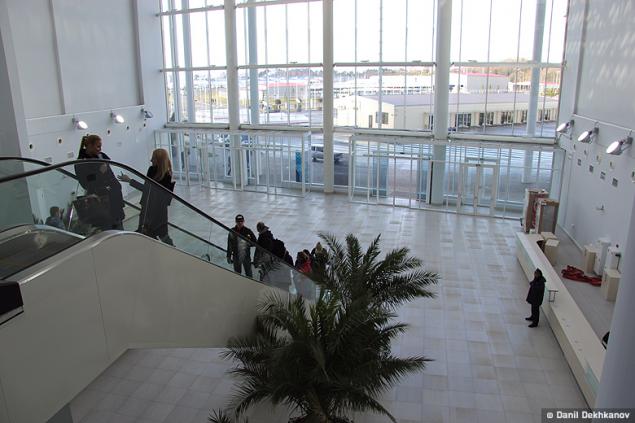
4G testing on different devices:
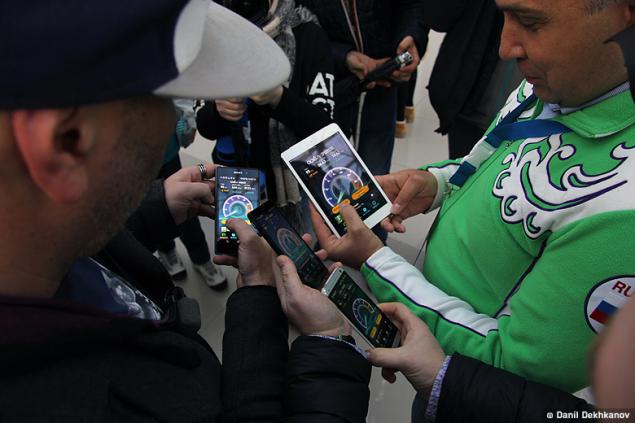
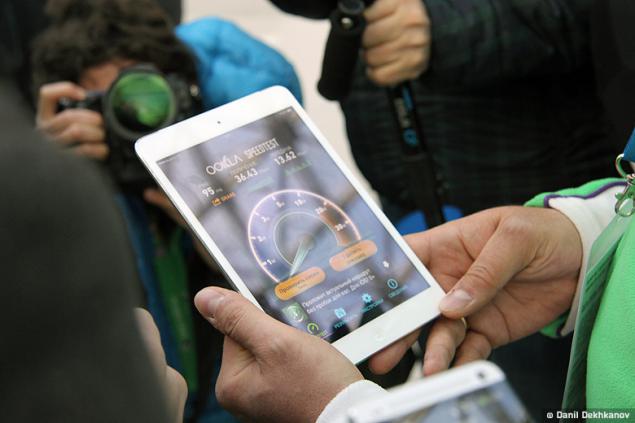
On average - 34 MB / s for download and 13 MB / sec on the return.
In addition to mobile communications in the media center and will certainly WiFi and leased lines, but this is an area of responsibility of Rostelecom.
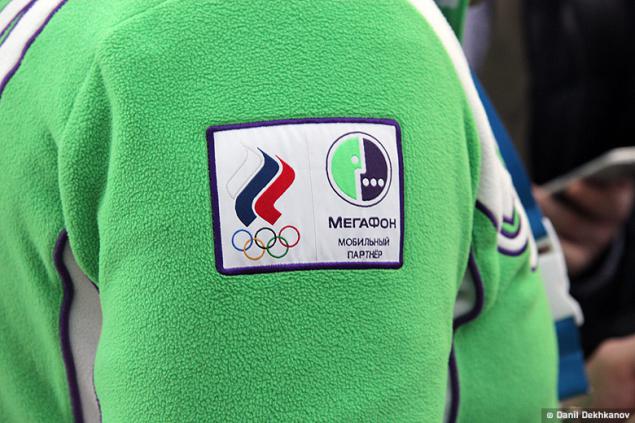
Infrastructural power megaphone in the media center designed for a maximum load - 12,000 journalists.
By the way, the Americans have stopped (More December 18), and it calls in "Channel»:
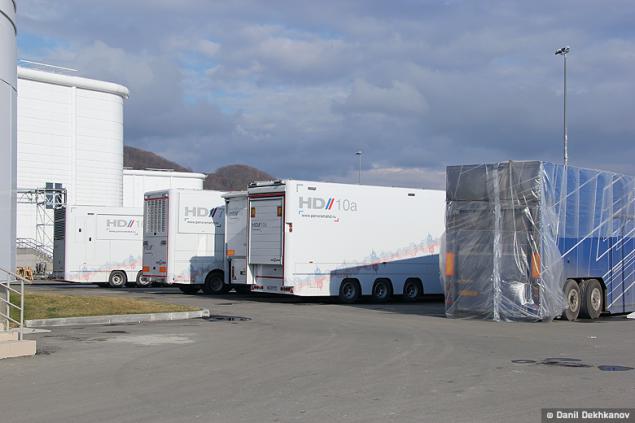
Next on the program: Channel One Cup match Russia - Czech Republic:
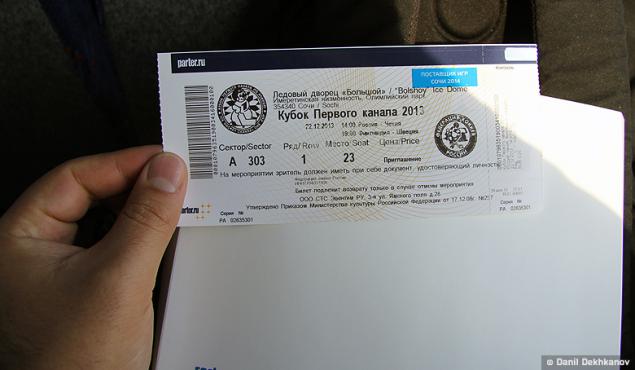
And here is the palm of Megafon, which I mentioned in the beginning. These trees in public places, where a large crowd of spectators expected, few:

Come to the ice palace "Big»:

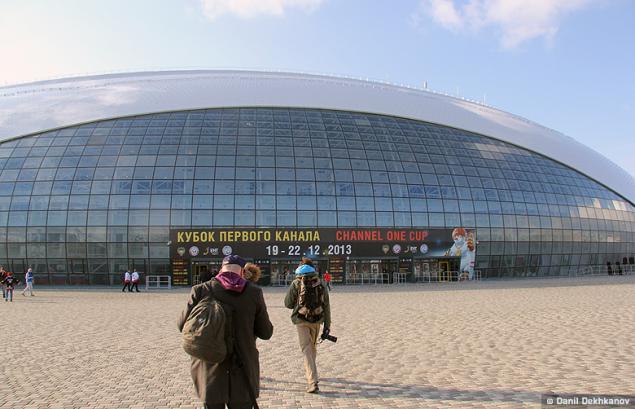
In the lobby there is a mini-studio for body art - drawing on the face and other body parts of national symbols:

The match has already begun, but the account until the 0: 0
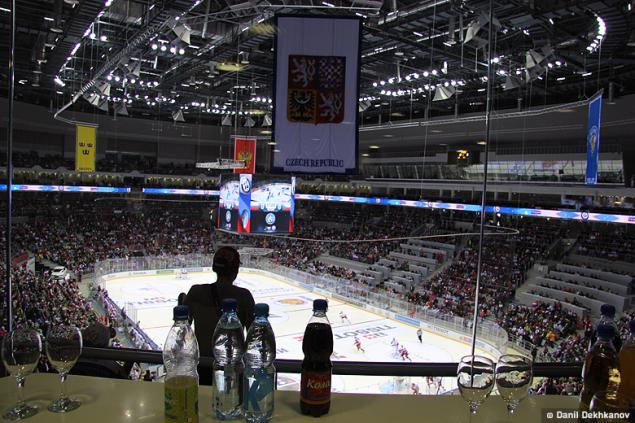
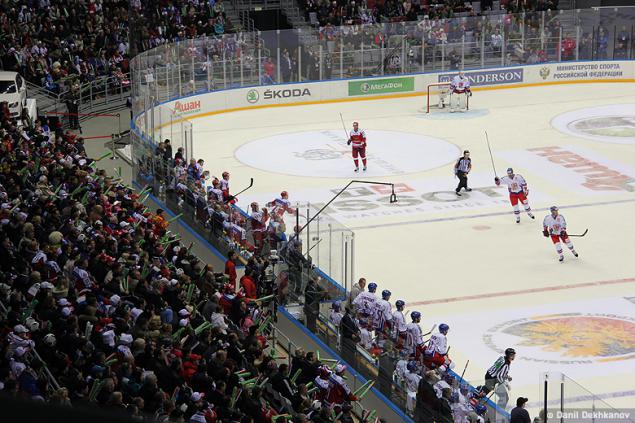
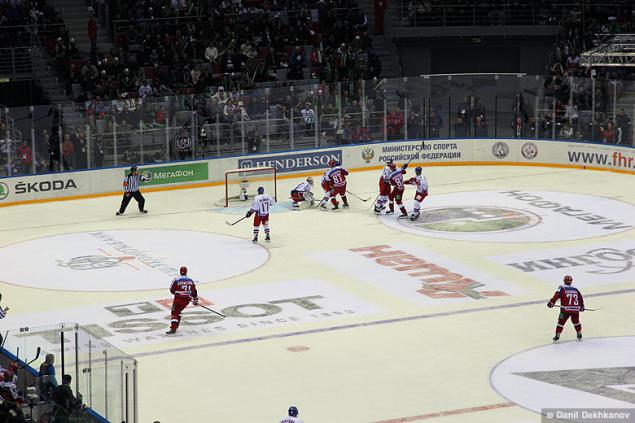
The match was attended by about 10 thousand. Fans, the stands were filled. Let's see how the mobile internet during breaks (when the "mobile" activity maximum):
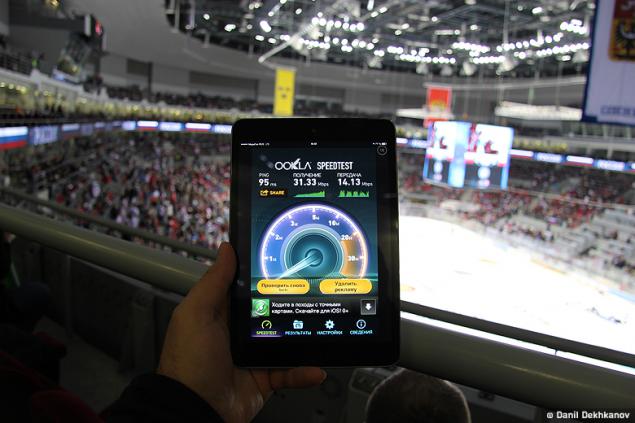
You can easily watch streaming video:
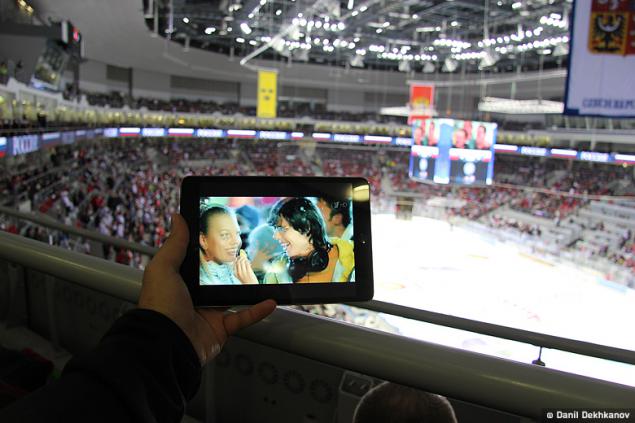
The experiment showed that advertising on screens above the arena ice palace is different from advertising in the air from the site of the First Channel:
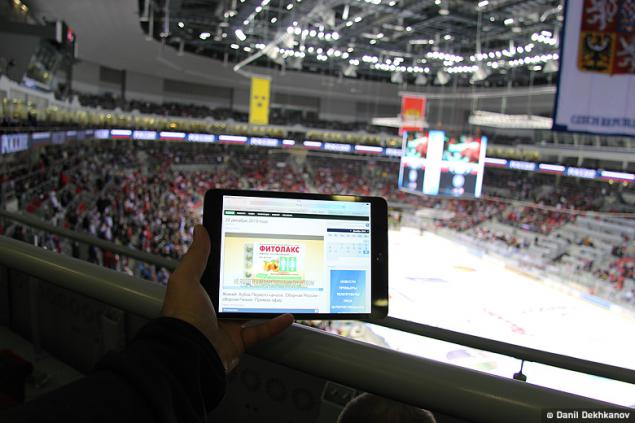
But, despite the struggle of our players and tense tacit support Alexandra Ivy :
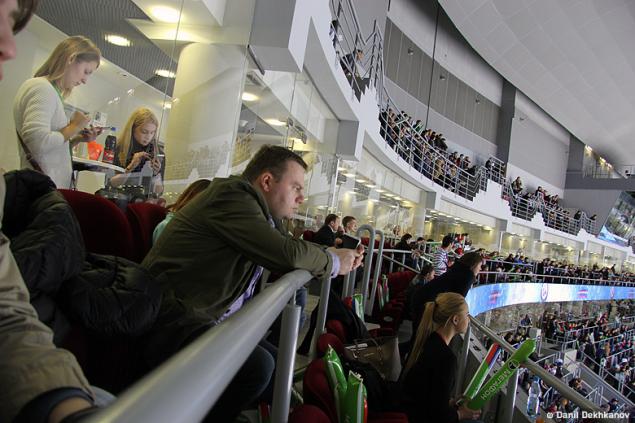
... Russia lost:
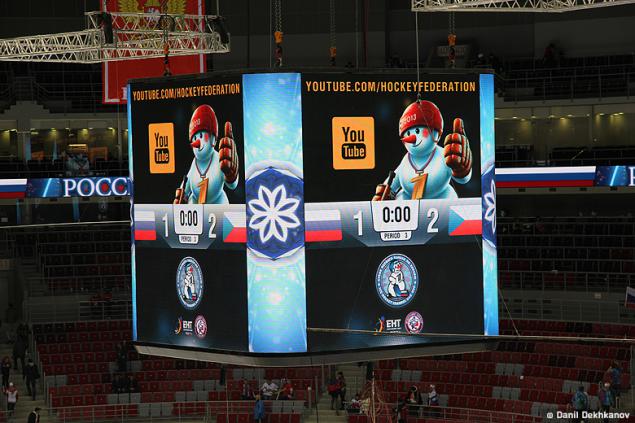
When everyone left, we went down to the technical rooms with a small tour.
All wires neatly stacked:
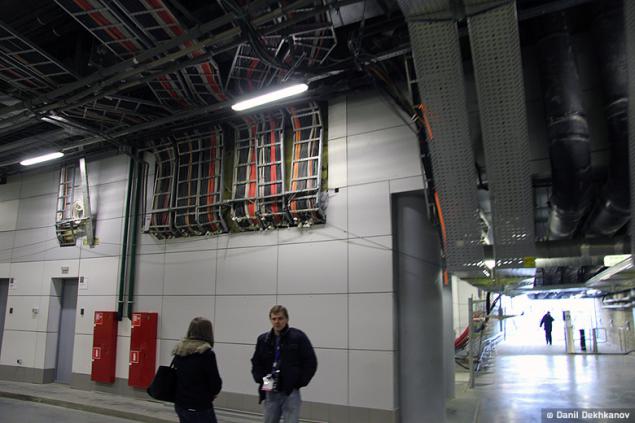
Private room contains all the switching equipment serving mobile communication Ice Palace:
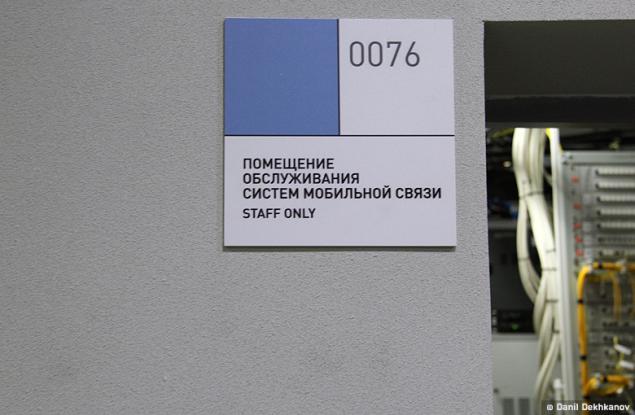
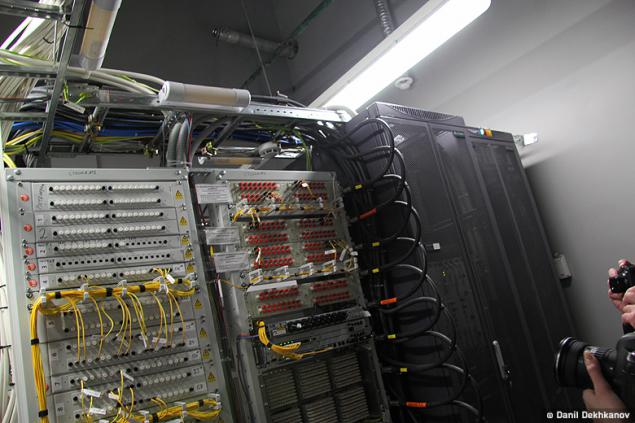

In addition to the digital thermometer built into the air conditioning system ...
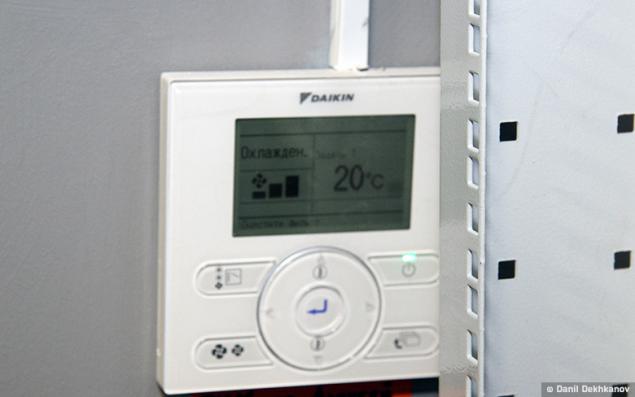
There is also an analog:
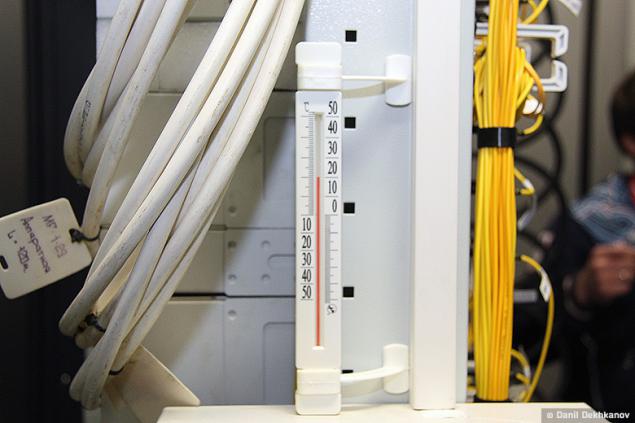
Come on. So look towards mobile station, placed in technical corridors:
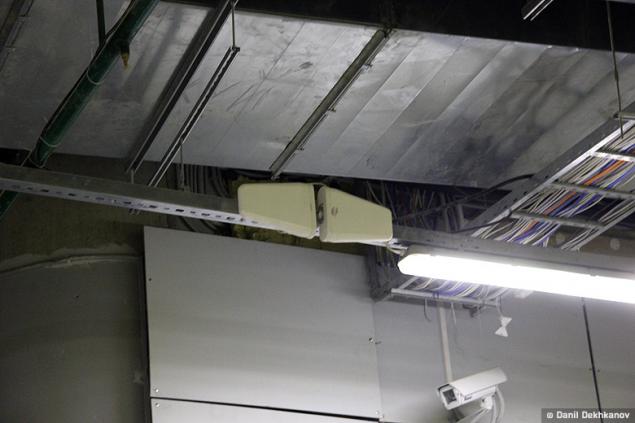
In the Ice Palace has its own media center:
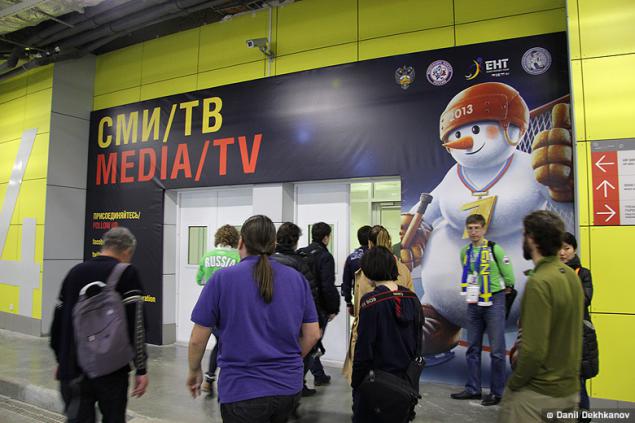
Just then there was a conference at the end of the game Russia - Czech Republic, and appends journalists and send your materials:

In order not to disrupt existing WiFi points, journalists are asked not to use personal wireless hotspots and 3G Routers:
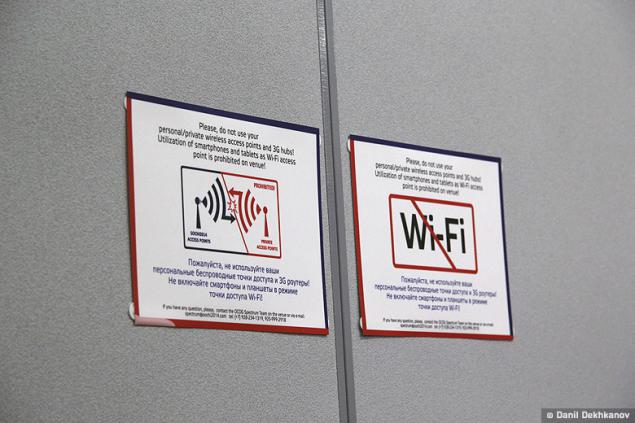
According to the employee Megaphone, those who violate this request and distributes Internet access to friends and colleagues, will calculate and urge them shut down "rogue" access points.
Conclusion h4>
Megaphone as mobility partner of the Olympic Games, has done a lot of work to create the infrastructure for mobile communications. According to forecasts of the Sochi 2014 Olympic Committee will watch the games more than 3 billion people around the world, and a source of information for them will not only accredited journalists, but also the audience for which the mobile phone will become the primary means for transmitting this information.
So if you are planning to take part in the Olympics, then please be Simcoe Megaphone, at least save on roaming!
And yes, I want to wish good luck to our athletes!
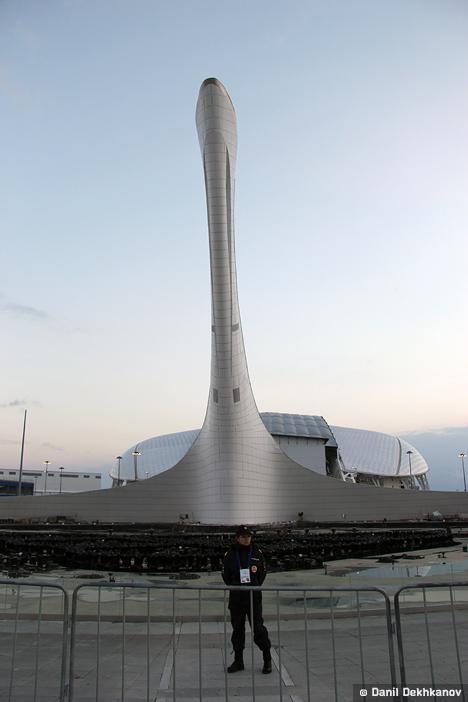
Source: habrahabr.ru/post/207790/












































































